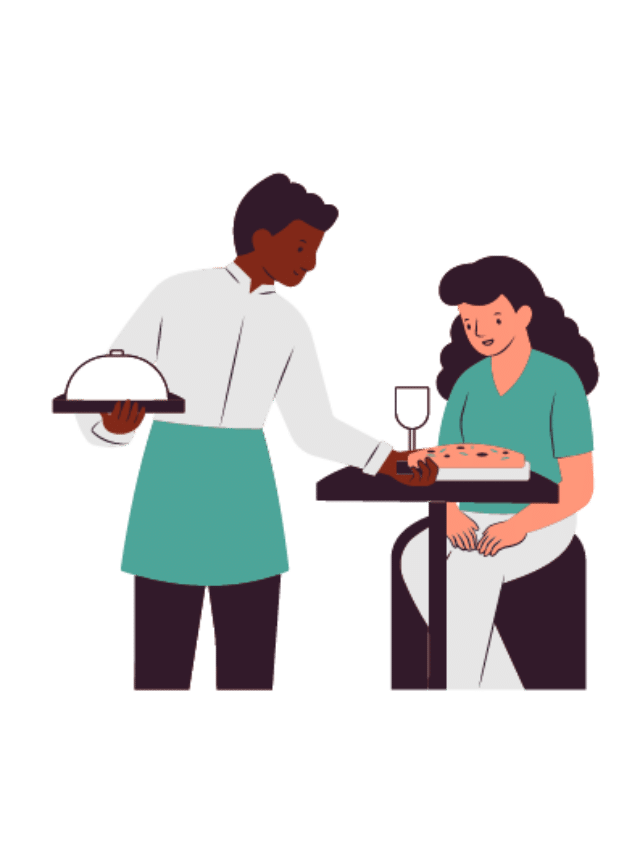Marketing objectives are an integral part of any successful marketing strategy, and restaurants are no exception. By setting clear, measurable, and attainable marketing objectives, a restaurant can focus its efforts and allocate its resources effectively in order to attract and retain customers. In this article, we will explore five key marketing objectives that a restaurant might set in order to achieve its business goals and be successful in today’s competitive market.
Here is the list of all Marketing Objectives for a Restaurant, Go ahead and click on any of these links, and you’ll be taken to that specific section.
- Increase Brand awareness
- Boosting Customer Loyalty
- Driving traffic to the Restaurant
- Increasing Sales
- Improving customer satisfaction
- Conclusion
Increase brand awareness
One of the main goals of marketing for a restaurant is to increase brand awareness, or the extent to which people are aware of the restaurant’s brand. This can be achieved through a variety of marketing channels, such as social media, advertising, public relations, and word-of-mouth. By increasing brand awareness, a restaurant can reach a wider audience and make more people aware of its offerings.
There are several strategies that a restaurant can use to increase brand awareness, including:
- Developing a strong brand identity: This involves creating a unique and consistent visual identity, such as a logo, color scheme, and brand voice, that sets the restaurant apart from its competitors.
- Utilizing social media: Social media platforms like Facebook, Instagram, and Twitter can be powerful tools for reaching a large audience quickly and efficiently. By regularly posting high-quality content, interacting with customers, and running paid advertising campaigns, a restaurant can increase its visibility and reach on social media.
- Advertising: Advertising can be an effective way to reach a large audience and raise awareness of the restaurant’s brand. This could involve running ads in print or online media, on radio or television, or on billboards or other outdoor advertising channels.
- Public relations: Public relations involves building relationships with media outlets and influencers in order to generate positive coverage for the restaurant. This could involve sending press releases, hosting media events, or working with food bloggers and influencers to promote the restaurant.
Boosting customer loyalty
Customer loyalty is an important goal for any restaurant, as loyal customers are more likely to return to the restaurant and recommend it to others. A restaurant can set the goal of increasing customer loyalty by offering loyalty programs, discounts, or other incentives to encourage repeat business.
There are several strategies that a restaurant can use to boost customer loyalty, including:
- Loyalty programs: Loyalty programs reward customers for their business by offering points, rewards, or discounts for each purchase they make. These programs can be a powerful way to encourage repeat business and build customer loyalty.
- Personalized experiences: By offering personalized experiences, such as custom menu recommendations or tailored promotions, a restaurant can make customers feel valued and create a sense of loyalty.
- Excellent service: Providing excellent service can be a key factor in building customer loyalty. This could involve training staff to be friendly and attentive, responding promptly to customer inquiries or complaints, and going above and beyond to meet customer needs.
- Community involvement: By participating in local events and supporting community organizations, a restaurant can build goodwill and create a sense of loyalty among its customers.
Driving traffic to the restaurant
Attracting new customers to the restaurant is an important goal for any business. A restaurant can set the goal of driving traffic to its location by using various marketing techniques to reach new audiences.
There are several strategies that a restaurant can use to drive traffic to its location, including:
- Online reviews: Encouraging customers to leave positive reviews on sites like Yelp, Google, and TripAdvisor can help the restaurant to attract new customers.
- Local marketing: Targeting marketing efforts to a specific geographic area, such as a neighborhood or city, can be an effective way to drive traffic to the restaurant. This could involve using local directories, running local advertising campaigns, or participating in community events.
- Social media: Using social media to promote the restaurant can be an effective way to reach new audiences and drive traffic to the restaurant. This could involve posting high-quality content, interacting with followers, and running paid advertising campaigns on platforms like Facebook, Instagram, and Twitter.
- Email marketing: By collecting email addresses from customers and sending out newsletters or promotional emails, a restaurant can stay top-of-mind with its audience and drive traffic to its location.
- Influencer marketing: Partnering with influencers or bloggers who have a large following can be an effective way to reach new audiences and drive traffic to the restaurant.
Increasing sales
One of the main goals of marketing for a restaurant is to increase sales and revenue. This can be achieved by promoting special deals or discounts, creating new menu items, or increasing the restaurant’s online presence.
There are several strategies that a restaurant can use to increase sales, including:
- Promotions and discounts: Offering promotions or discounts can be a powerful way to attract new customers and encourage repeat business. This could involve offering discounts on certain menu items, running a special deal for first-time customers, or offering loyalty rewards for frequent diners.
- New menu items: Introducing new menu items can be an effective way to attract new customers and increase sales. This could involve adding new dishes to the menu, offering limited-time specials, or introducing new menu items that are in line with current food trends.
- Online presence: Increasing the restaurant’s online presence can be an effective way to reach new customers and drive sales. This could involve optimizing the restaurant’s website for search engines, using social media to promote the restaurant, or running online advertising campaigns.
Improving customer satisfaction
Customer satisfaction is an important goal for any business, as happy customers are more likely to return and recommend the restaurant to others. A restaurant can set the goal of improving customer satisfaction by offering high-quality food, excellent service, and a pleasant atmosphere.
There are several strategies that a restaurant can use to improve customer satisfaction, including:
- High-quality food: Offering high-quality, fresh, and flavorful food is essential for customer satisfaction. This could involve sourcing ingredients from local farms or using high-quality cooking techniques and equipment.
- Excellent service: Providing excellent service can be a key factor in improving customer satisfaction. This could involve training staff to be friendly and attentive, responding promptly to customer inquiries or complaints, and going above and beyond to meet customer needs.
- Pleasant atmosphere: Creating a pleasant atmosphere can be an important factor in customer satisfaction. This could involve designing a visually appealing dining space, using music or other sensory elements to create the desired atmosphere, and maintaining a clean and well-maintained restaurant.
Conclusion
Marketing objectives are essential for helping a restaurant to achieve its business goals and attract and retain customers. By setting clear and measurable objectives, such as increasing brand awareness, boosting customer loyalty, driving traffic to the restaurant, increasing sales, and improving customer satisfaction, a restaurant can focus its efforts and allocate its resources effectively in order to achieve success. By regularly reviewing and adjusting its marketing objectives, a restaurant can ensure that it is on track to achieve its business goals and continue to grow and thrive. By focusing on these key marketing objectives, a restaurant can stay competitive in today’s market and attract and retain loyal customers.






